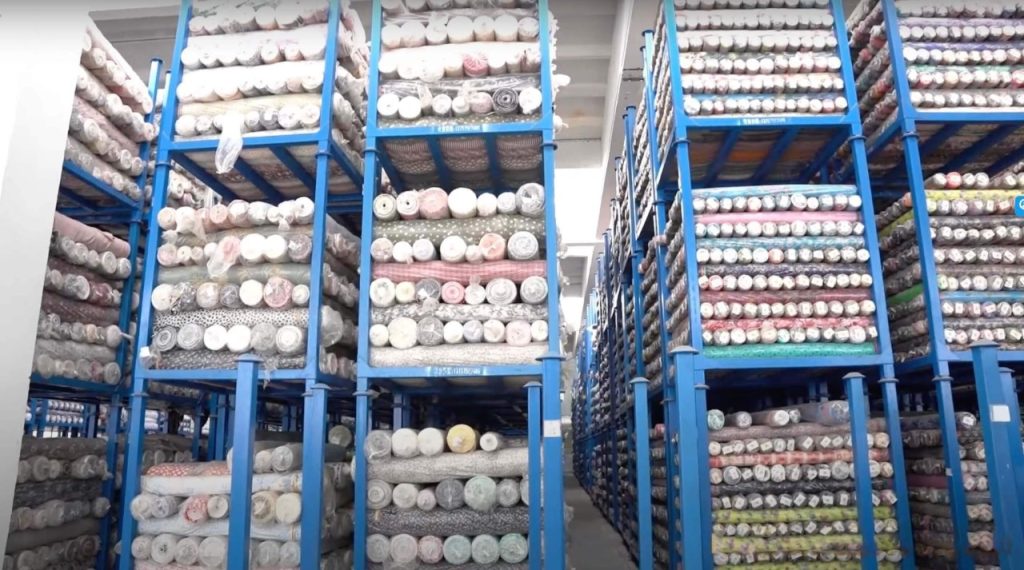For enterprises using textiles, quilters, and sewing aficionados, fabric rolls are a staple tool. Maintaining their quality and stopping damage over time depend on correct storage and upkeep. Knowing the best procedures for long-term storage guarantees that, whether you are handling bulk fabric or specialty materials like jelly roll fabric, they stay in great shape. Maintaining fabric integrity depends much on factors including humidity, light exposure, and good treatment. Your fabric rolls will remain fresh and ready for next tasks if you use correct strategies.
Selecting the Correct Storage Area
First step in maintaining fabric rolls is choosing a suitable storage place. The perfect surroundings should be dry, cool, and devoid of direct sunshine since too much heat and moisture could cause fabric damage. Because of humidity swings that could lead to mold development or fabric deterioration, basements and attics are not always the greatest choices. Fabric kept in a temperature-regulated chamber stays strong and colorful. Steer clear of rolling windows since extended sun exposure could fade them. Good ventilation guarantees fabric lifetime and helps to avoid undesired damage.
Keeping Fabric Dry and Moisture-free
Preventing mold, mildew, and fabric warping depends on regulation of humidity. In storage spaces, dehumidifiers can help to preserve a desired humidity level. Placed next to kept fabric, silica gel packets or moisture-absorbing goods help to further lower the chance of dampness. If fabric rolls are kept in plastic containers, make sure they feature tiny ventilation holes to let air flow and stop condensation accumulation. Direct storage of fabric on concrete flooring should never be allowed since moisture could sneak in and cause permanent harm. Maintaining a dry and tidy storage space guarantees fabric stays fresh and useable.
Appropriate Folding and Rolling Fabric
The longevity and simplicity of use of cloth depend much on how it is folded or rolled. Stored horizontally, big fabric rolls help to avoid creasing and material stress. Should vertical storage be required, make sure the rolls are evenly supported to prevent sagging. Folding smaller pieces using acid-free tissue paper between layers helps stop color transfer and wrinkles. To avoid flattening or distortion while stacking fabric, keep heavier rolls off delicate textiles. Good handling methods help to keep fabric quality over time.
Employing protective covers and containers
Fabric rolls can suffer from dust and pests, hence protective covers are rather important for long-term storage. Better than plastic bags are cotton or muslin ones since they let ventilation and keep dust away. If plastic containers are used, make sure they are composed of permeable materials to avoid moisture trap-action. Newspaper should not be used for wrapping since the ink could stain cloth. Clearly identifying and retrieving each kept roll depends on labeling it with information on fabric kind and length. Using appropriate protective materials helps to preserve cloth in perfect shape.
Stopping Damage from Pests
Insects that eat natural fibers, such moths and silverfish, can degrade fabric rolls. Natural deterrents without causing damage are cedar blocks or lavender sachets placed next to kept textiles. Frequent storage area inspections for evidence of pest activity guarantees early identification and control. Maintaining a clean and free from food waste helps to lower the chance of invasion of the area. Should cloth exhibit evidence of insect damage, freezing it for a few days will destroy any concealed pests. Measures of proactive insect management help to maintain fabric integrity for long use.
Maintaining the quality and usability of cloth rolls over time depends on appropriate storage and care of them. Following top standards guarantees that, whether keeping big textile rolls or specialized materials like jelly roll fabric, they stay fresh and undamaged. Further helping to preserve fabric are consistent inspections, a neat storage system, and measures of pest control. Professionals and aficionados for fabrics can increase the lifetime of their materials and preserve their value for next projects by spending time in appropriate treatment.
